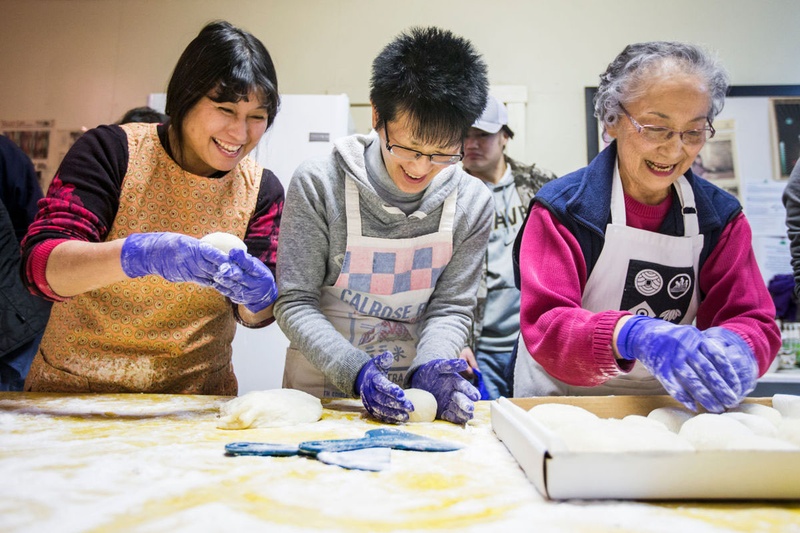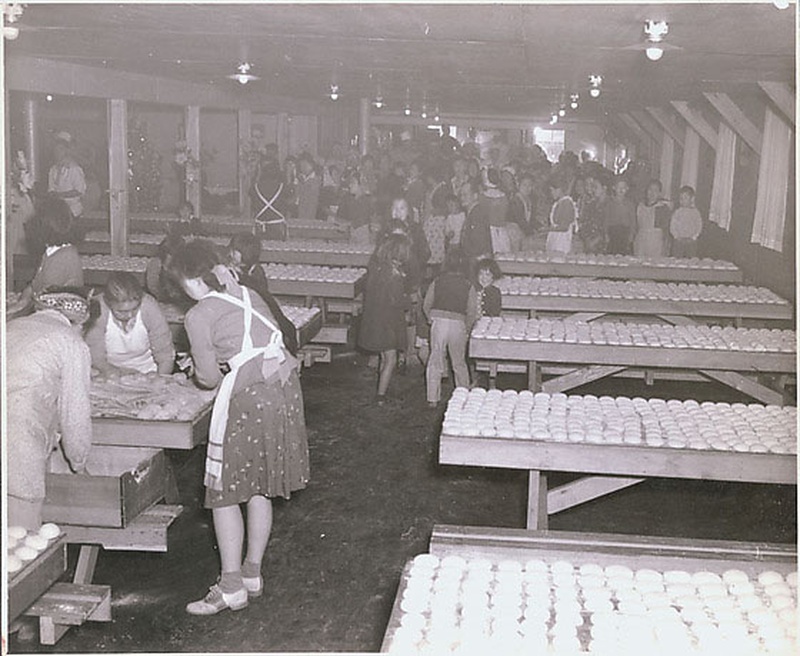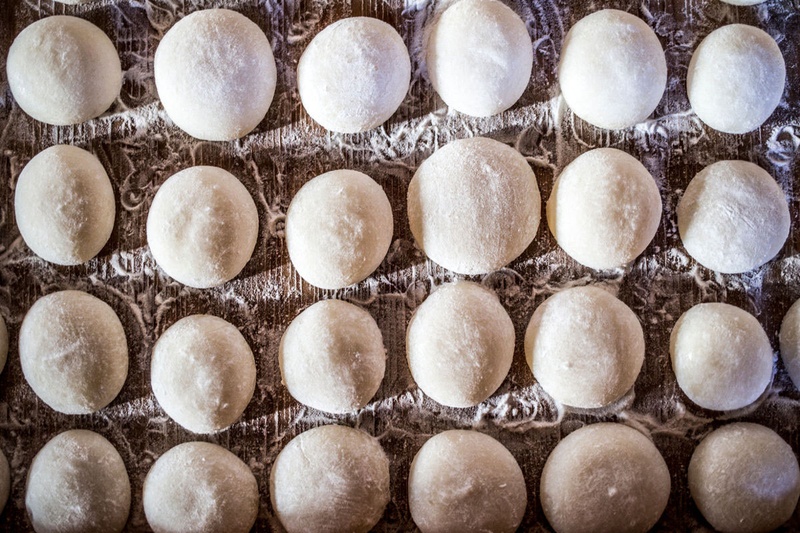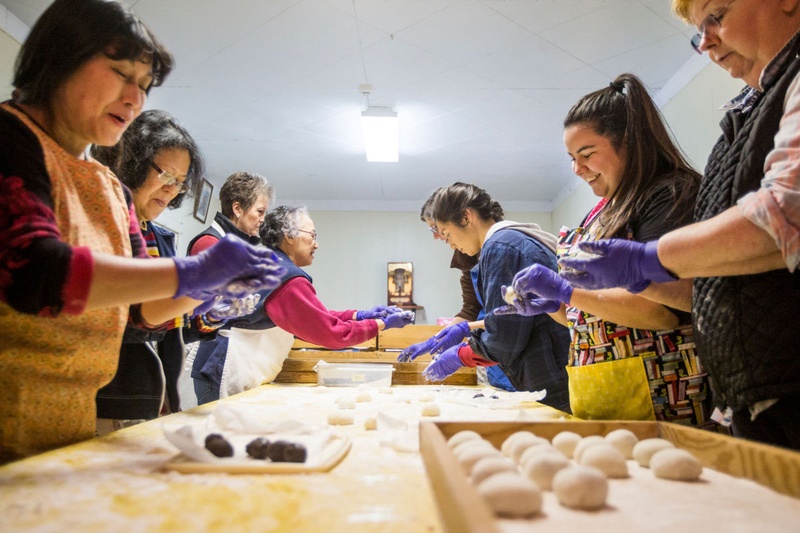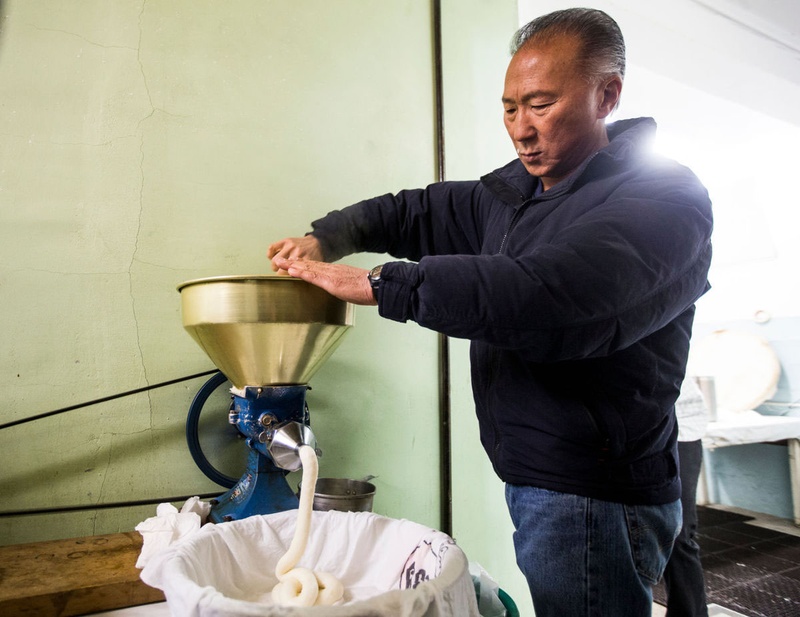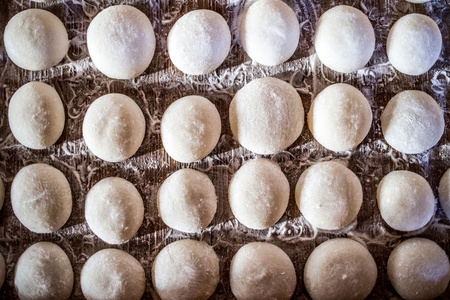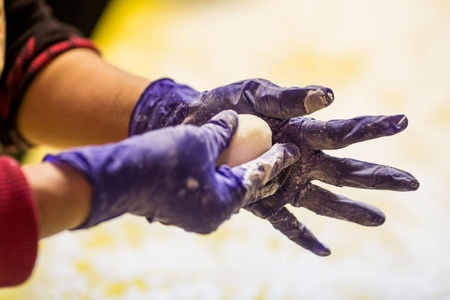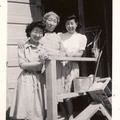The dense aroma of steaming rice filled the narrow stairway leading to the basement of the Bussei Kaikan, the big brick gymnasium near the Yakima Buddhist Church.
In a warm corner lit by small windows stood a large steel kettle filled with boiling water and topped with three stacked wooden boxes. Lined with porous bamboo mats, each box contained a few pounds of mochigome, a short-grain rice soaked for 24 hours and drained in preparation for mochitsuki: mochi making.
“When you see the steam come out the top, it’s ready,” Dave Sakamoto said during the December 30 event. About every 20 minutes, a few of the men working downstairs lifted the top two boxes to pull out the bottom box, emptied the rice into a machine to grind it and added a new box of rice to the top of the stack.

“Everybody brings their own rice,” Dean Hata noted.
For decades, members and friends of the Yakima Valley’s Japanese community have gathered on the Saturday between Christmas and New Year’s Eve for mochitsuki. They begin early in the morning by heating up the water and continue a familiar routine into the afternoon, until everybody’s batches of rice have been drained, steamed, ground into a smooth dough, and formed into dozens of bun-shaped mochi cakes.
It’s a legacy of the Japanese immigrants who began coming to the Valley in the 1880s, bringing with them a New Year’s tradition dating to the Japanese Heian period (794–1185). When the Valley’s 1,017 residents of Japanese ancestry were forced from their homes in June 1942 due to Executive Order 9066, they continued the mochi-making tradition during imprisonment at Heart Mountain Relocation Center in Wyoming.
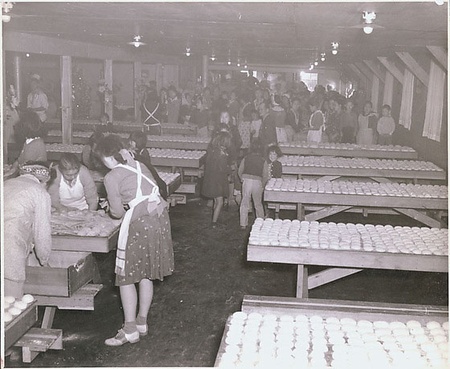
Mochi comes in different forms throughout the year. The dough is flavored and colored and cut into specific shapes, such as the rhomboid mochi bars served on Girls Day. Mochi is stuffed with ice cream or added to dessert soups and savory soups.
Some also toast mochi and garnish it with sugar, or flatten the dough into sheets and cut it into sweet, chewy bars.
“My kids like to put it in the toaster oven; it expands and gets crispy,” Kari Iseri said.
During the most recent event, most of the mochi dough ended up as small, round cakes, some filled with azuki, a sweet bean paste that resembles chocolate.
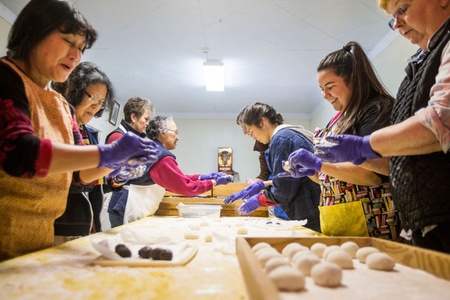
But one part of the mochi-making process was a little different, thanks to modern technology. As Kyle Wilkinson funneled the dough into a mochi-cutting machine, his mother, Diana Wilkinson, snipped the emerging dough into pieces that she tossed toward the waiting hands of other volunteers.
“We got a new machine so we’re all in a quandary about how to do things,” said Shiz Inaba, 88. “I just do what I always do.”
She was among about two dozen women, all wearing rubber gloves, who stood alongside two long tables generously dusted with mochiko, a sweet rice flour, and cornstarch. The powdery mixture made handling the hot, sticky dough easier.
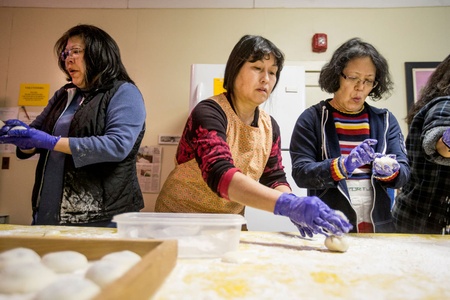
“The longer you wait, the harder it is to shape it,” Diane Inaba said as they formed the dough into palm-sized mounds, lined them up in shallow corrugated cardboard boxes brought by each family, and took them into the main hall of the Kaikan to cool. Families would later take their mochi home, bag and freeze it.
Volunteers also made Kagami mochi (mirror rice cake) for Buddhist church and home altars, the smaller atop the larger.
“We put one of top of this, then we put an orange on the top,” Shiz Inaba demonstrated. “I donate this one to the church. The smaller (mochi) are for soup.”
Working on the main floor of the Kaikan, the women kept the mochi-making running smoothly by good-naturedly encouraging the men delivering the dough to keep it coming.

The men ground the rice in a small, clattering tabletop machine, which represents the biggest change in the annual event. It means the men no longer grind the rice by pounding it in a large bowl—an usu—with wood mallets known as kine.
There are other Japanese communities that still pound the rice, Hata said. But that takes experience, strength, and an excellent sense of rhythm.
“We’re going with modern technology here,” Hata added amid chuckling.
Mas Seto, 73, recalled years of pounding the sweet rice by hand with his family and friends.
“We quit pounding it in 1973 or ’74,” Seto said. “All through the ’50s and ’60s we pounded it, up (into) the ’70s. We’d get four people in sequence and start pounding. If we didn’t have the manpower, we’d go down to three,” he said.
As the dough became smoother, some pounding the rice would drop out. “When it got to the end, it would be just one guy pounding and one guy turning” the dough, Sakamoto said. “They were really pounding it hard.”
“We had these washtubs, two washtubs—one to keep the fire in place and one with water for the steam, and we usually had four of those boxes stacked,” he added.
Members of his family would pound 100 pounds of the rice, Sakamoto said.
*This article was originally published in the Yakima Herald-Republic on January 11, 2018.
© 2018 Tammy Ayer


